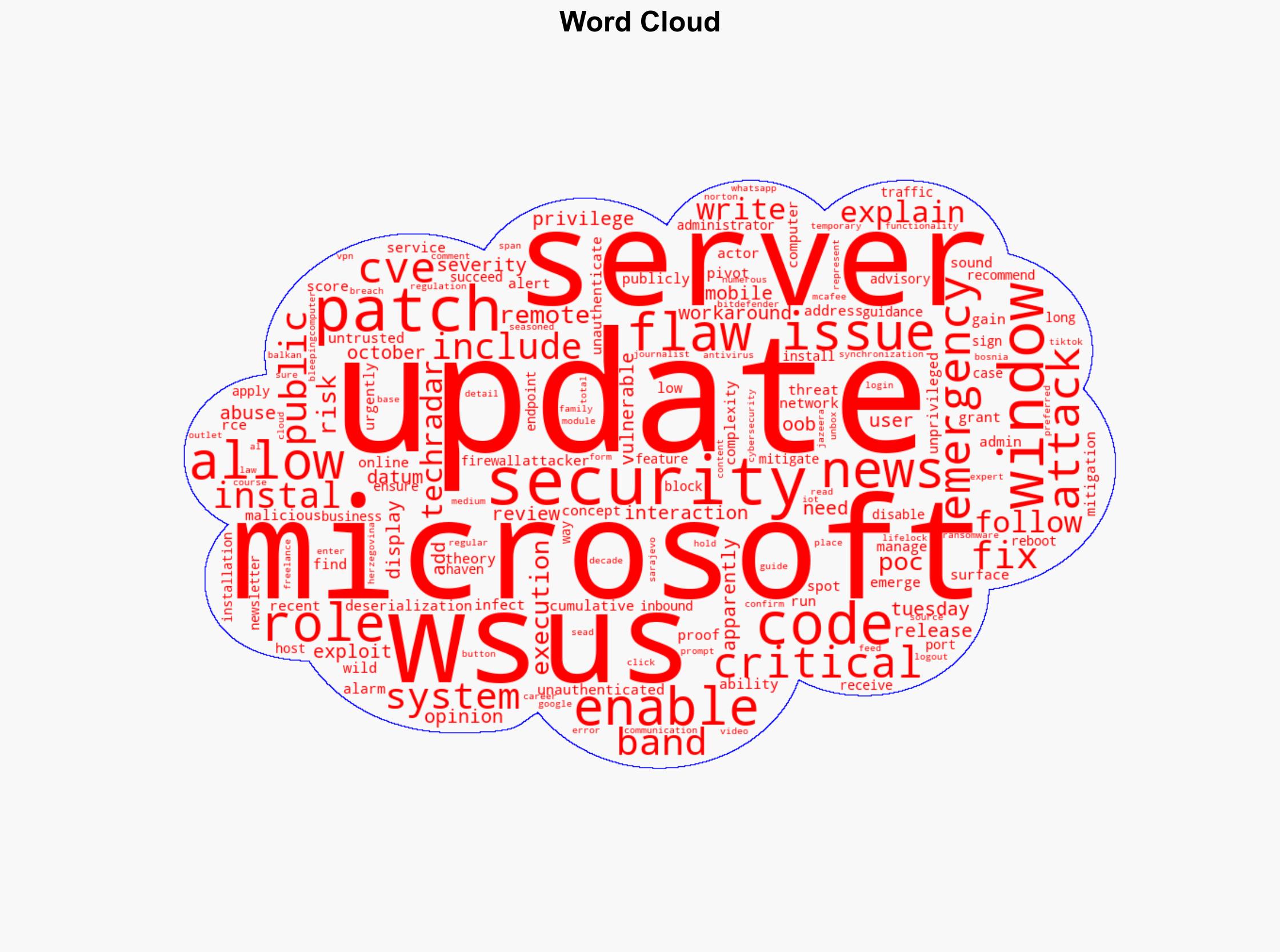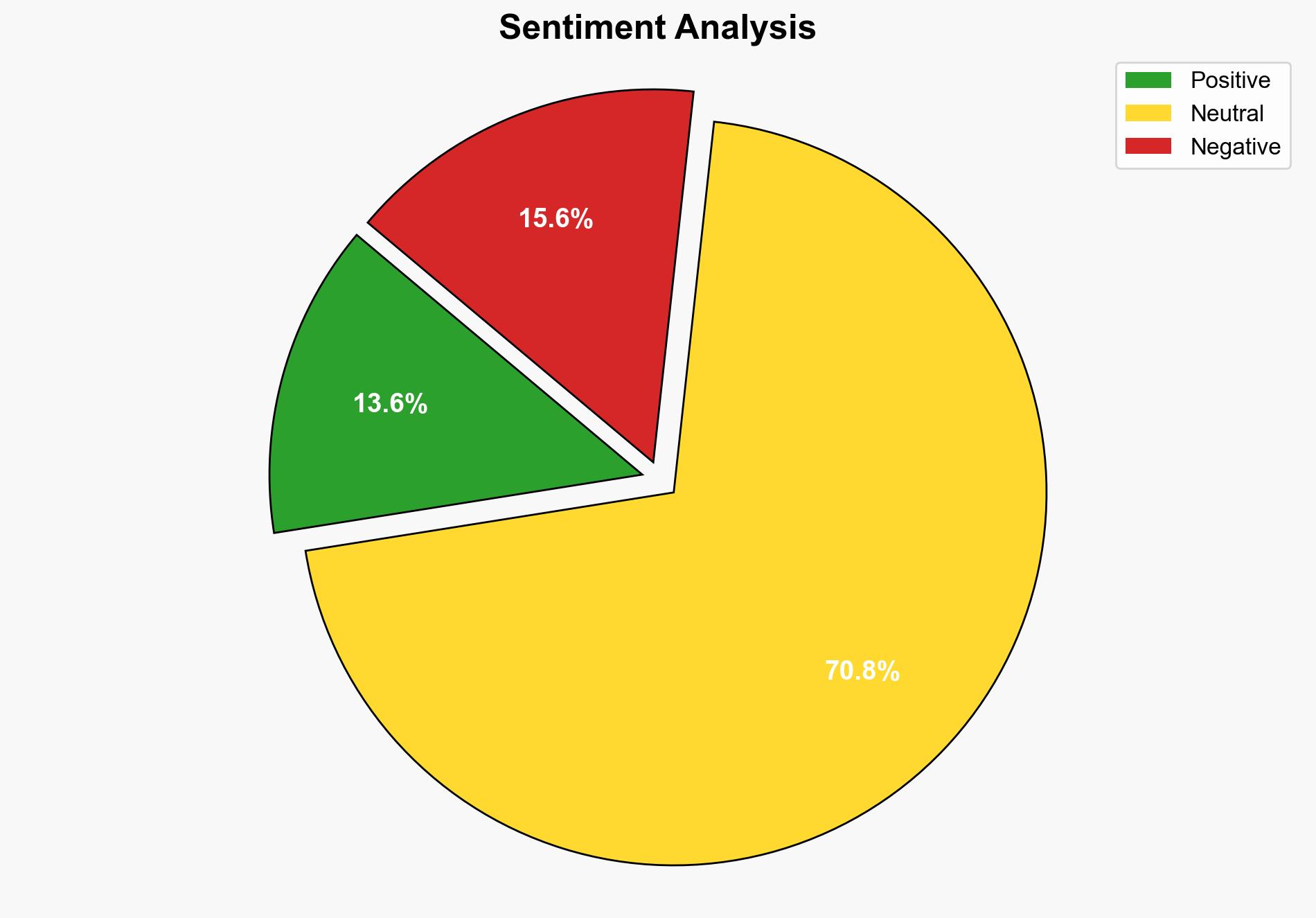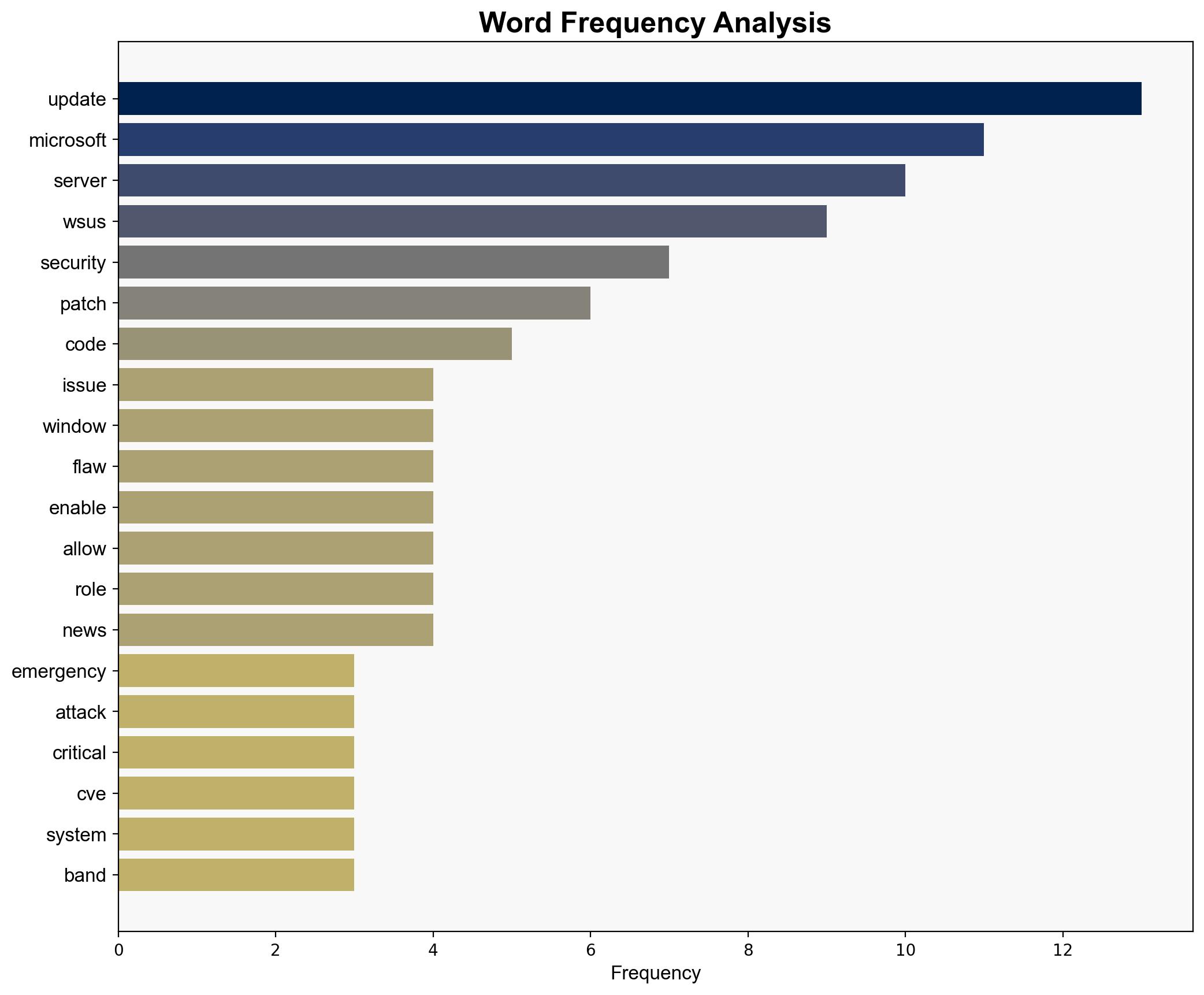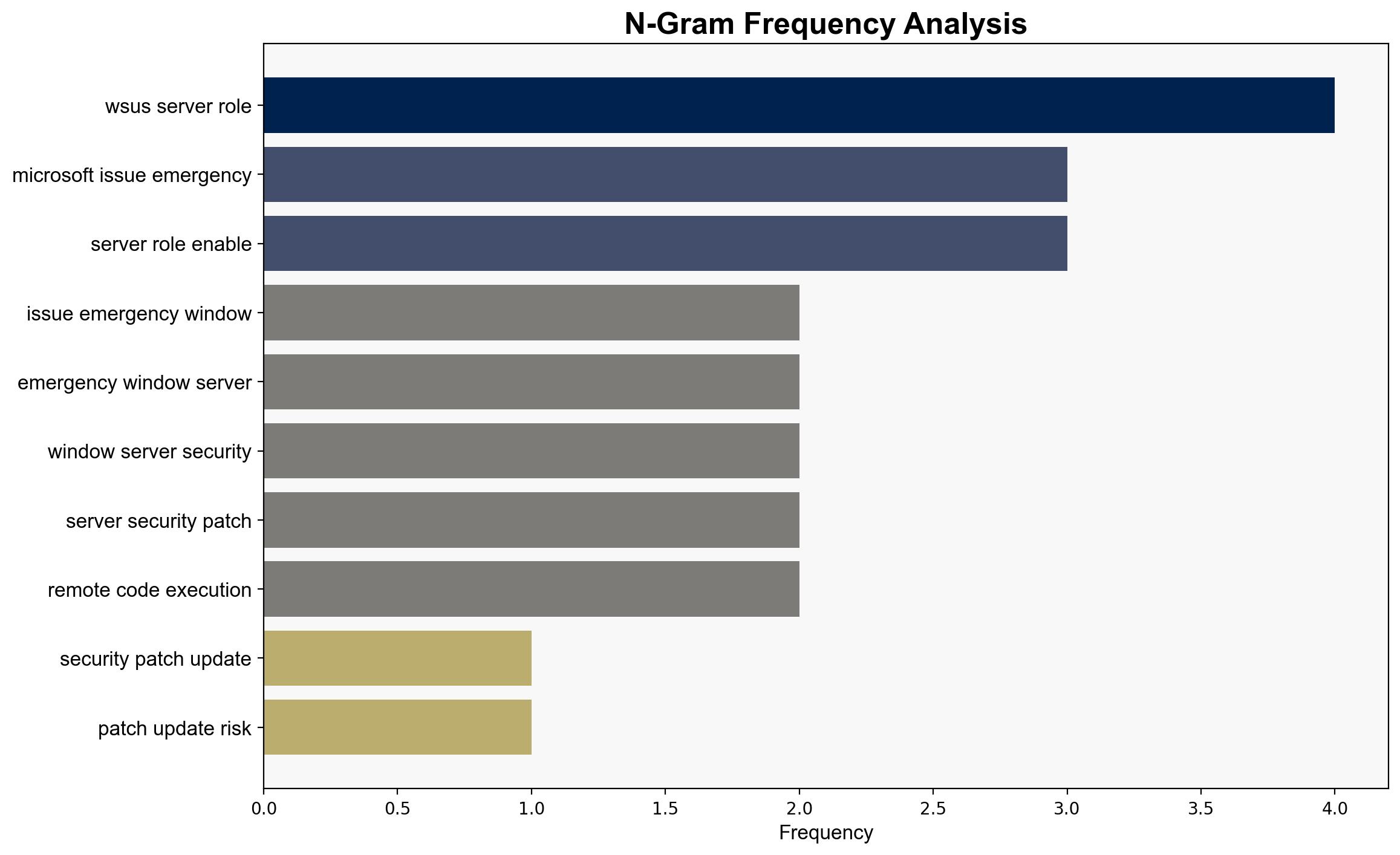Microsoft issues emergency Windows server security patch – update now or risk attack – TechRadar
Published on: 2025-10-24
Intelligence Report: Microsoft issues emergency Windows server security patch – update now or risk attack – TechRadar
1. BLUF (Bottom Line Up Front)
The most supported hypothesis is that the vulnerability in the Windows Server Update Service (WSUS) is actively being exploited, necessitating immediate action to apply the emergency patch. This conclusion is drawn with a high confidence level due to the presence of proof-of-concept (PoC) exploit code and the critical nature of the flaw. Immediate patching is recommended to mitigate potential widespread attacks.
2. Competing Hypotheses
Hypothesis 1: The WSUS vulnerability is actively being exploited in the wild, and the emergency patch is critical to prevent further attacks. This hypothesis is supported by the release of PoC exploit code and Microsoft’s urgent advisory.
Hypothesis 2: The vulnerability, while severe, is not yet widely exploited, and the emergency patch is a precautionary measure to prevent potential future attacks. This hypothesis considers the possibility that the urgency is driven by the potential for exploitation rather than current widespread activity.
Using the Analysis of Competing Hypotheses (ACH) 2.0, Hypothesis 1 is better supported due to the presence of PoC code and the critical severity score assigned to the vulnerability.
3. Key Assumptions and Red Flags
Assumptions for Hypothesis 1 include the belief that the PoC code is functional and that attackers have the capability to exploit the vulnerability. A red flag is the lack of specific incident reports detailing active exploitation, which could indicate overestimation of the threat.
For Hypothesis 2, the assumption is that Microsoft is acting out of an abundance of caution rather than responding to active threats. A potential blind spot is underestimating the speed at which attackers can leverage the PoC code.
4. Implications and Strategic Risks
If Hypothesis 1 is correct, there is a significant risk of widespread cyberattacks targeting vulnerable systems, potentially leading to data breaches and operational disruptions. Economically, organizations may face increased costs due to incident response and system downtime. Geopolitically, state actors could exploit this vulnerability to gain strategic advantages.
If Hypothesis 2 holds, the primary risk is complacency, leading to delayed patching and increased vulnerability over time. The psychological impact includes potential erosion of trust in Microsoft’s security measures.
5. Recommendations and Outlook
- Organizations should immediately apply the emergency patch to mitigate the risk of exploitation.
- Conduct a thorough review of network security protocols to ensure no other vulnerabilities are present.
- Scenario-based projections:
- Best Case: Rapid patch deployment prevents any significant exploitation.
- Worst Case: Delayed patching results in widespread attacks and significant data breaches.
- Most Likely: Some exploitation occurs, but prompt patching limits the impact.
6. Key Individuals and Entities
Sead, a seasoned freelance journalist based in Sarajevo, Bosnia and Herzegovina, provided insights into the cybersecurity landscape. No other individuals are specifically named in the source.
7. Thematic Tags
national security threats, cybersecurity, counter-terrorism, regional focus





